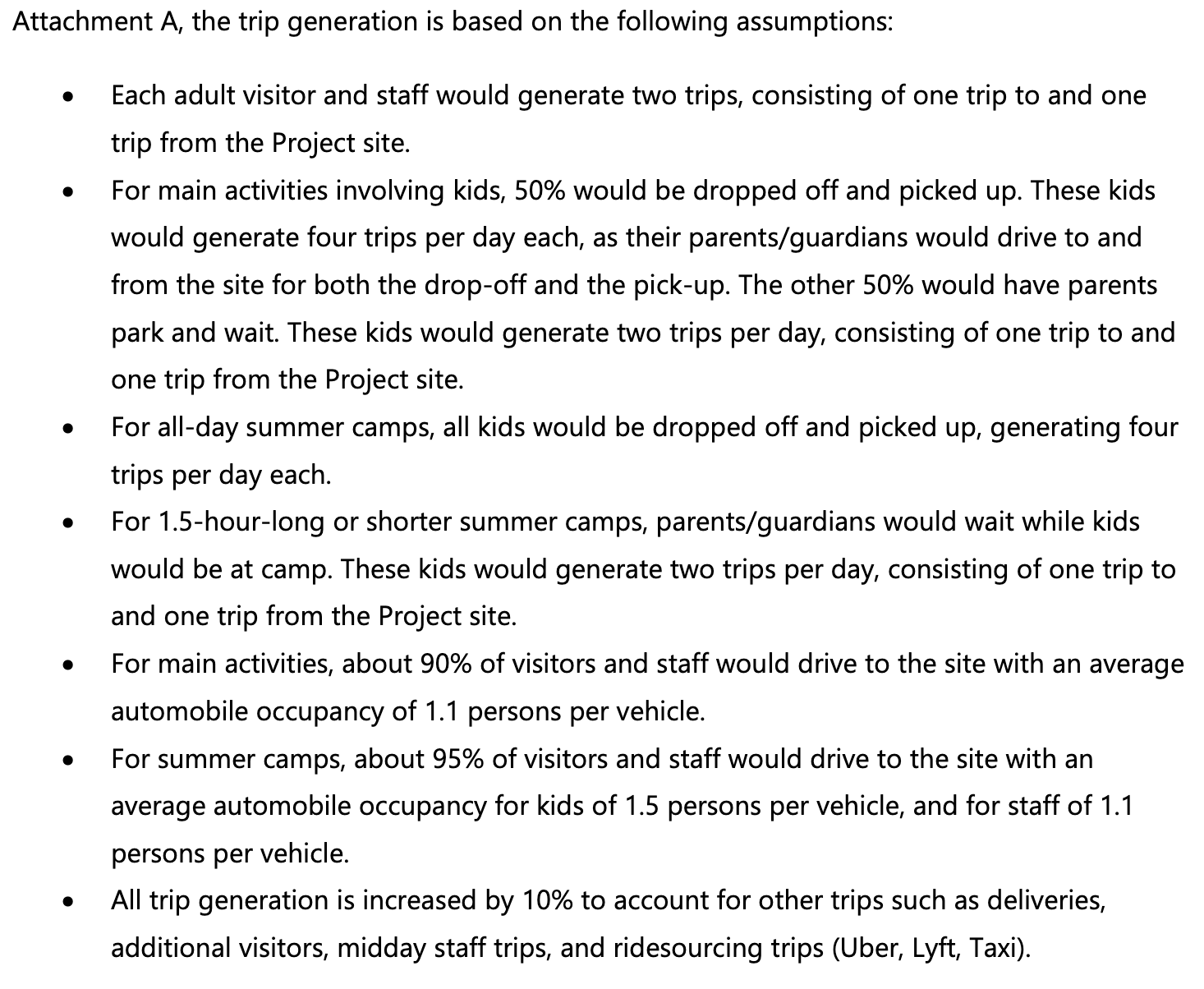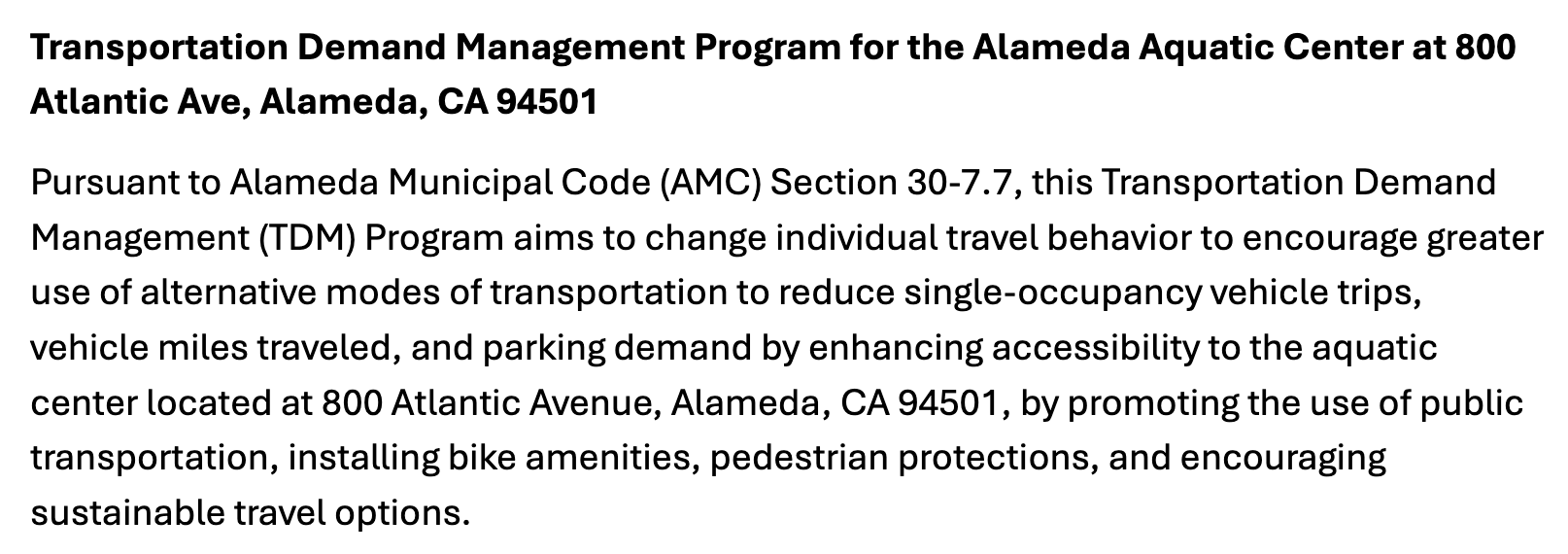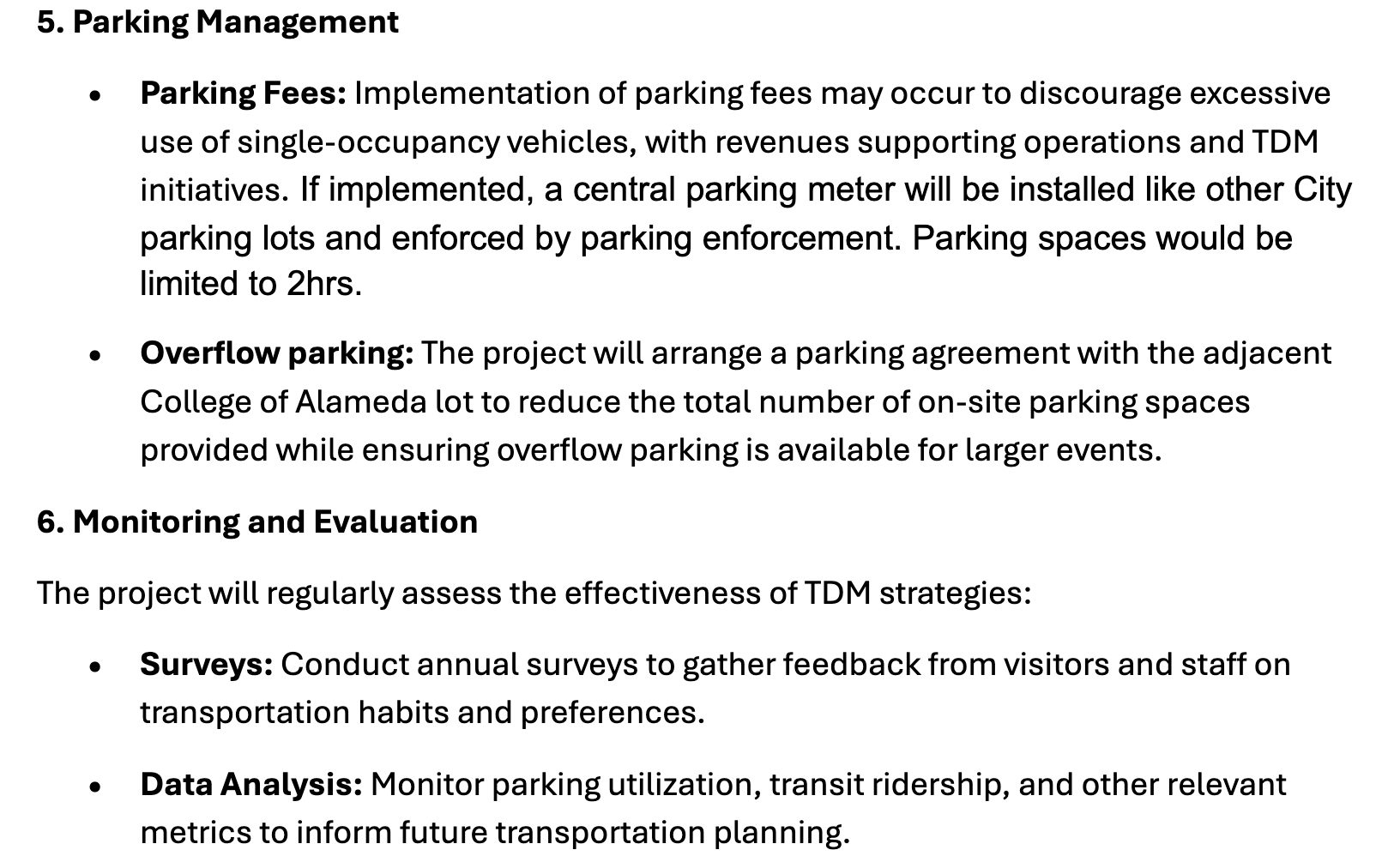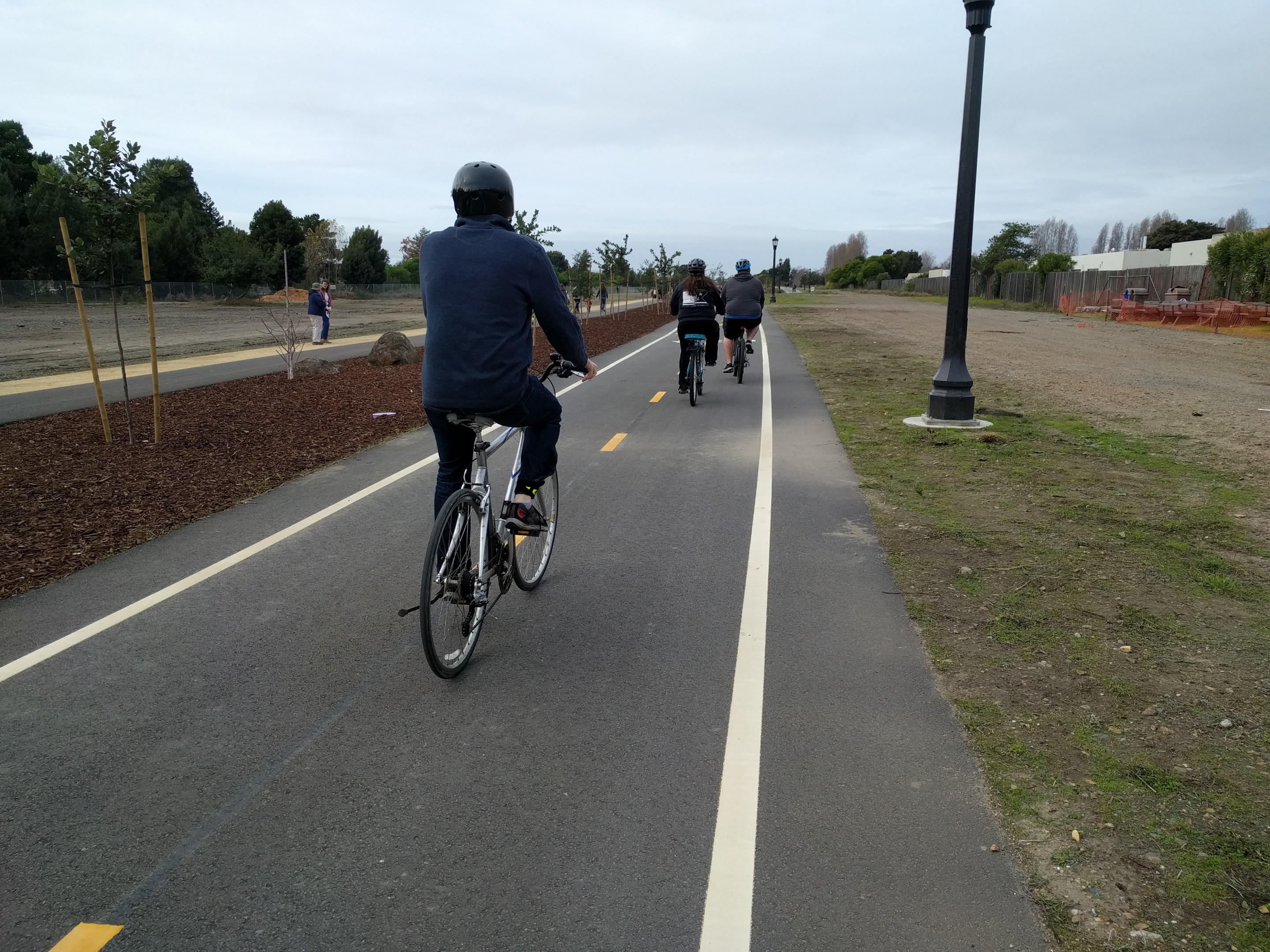A version of the following post first appeared in the Morning Bun and is reprinted here with permission.
"About 100%" of swimmers will arrive by car for events at the new Alameda Aquatic Center in Jean Sweeney Open Space Park, according to the transportation consultants recently hired by the aquatic center team. (The city's Planning Board will be receiving these consultants' reports at its meeting Monday/tonight.)
You'd hope someone at the Alameda Recreation and Parks Department (ARPD) would think to mention that the Cross Alameda Trail (CAT) — a pleasant and well-connected bike path — is right next to the planned aquatic center (see lead image)? And that the aquatic center will be a short walk from Webster Street, where AC Transit buses run frequently throughout the day? Did anyone at ARPD also mention that we have an Active Transportation Plan (ATP) and a Climate Action and Resiliency Plan (CARP) here in Alameda? (More on these sets of goals and policies a moment.) The engineering firm hired by the aquatic center team is based in Walnut Creek, so maybe they're just bringing with them a standard assumption that about 100% of people drive to work, to the grocery store, to their kids' sporting events, to everywhere...
Alameda's "mode-shift" and climate goals
In contrast with the engineers' assumptions, here in Alameda we're working systematically to reduce our overall reliance on driving as the sole and primary means of getting around. The transport sector is the largest source of carbon emissions within city limits, and if we are to reduce our overall climate impacts, we have to reduce our reliance on driving — particularly for the relatively short trips around Alameda.
Plus, frankly, for the 63% of trips in Alameda that are under 3 miles in distance (per p. 8 of the ATP), driving a car often just isn't as pleasant as riding a bike, walking, or figuring out how to "chain" together multiple trips by driving to one destination and then walking to a few other nearby destinations.
The inanity of having to drive everywhere shows through in even more assumptions made in the analytical modeling by the engineers regarding kids being dropped off and picked up at the aquatics center:

Perhaps ARPD didn't tell the engineers from Walnut Creek that there's a Starbucks about one block away from the aquatic center site. What percentage of parents of older kids do you think will drop their kid off and then just walk over to the Starbucks to relax by themselves until their kid's lesson or event is over? (Or park at the Starbucks and walk their kid over, so they can then return to the comfort of some caffeine.)
That shopping center also has a Walgreens. What amount of "midday staff trips" will in actually take the form of a walk across the street to that Walgreens — or to the neighboring bagel shop or anything else further down Webster Street — rather than increasing the "trip generation" count by 10% for additional staff trips by car in the middle of the day?
This is why I now have an e-cargo bike that can fit both of my kids and their gear — because schlepping them around town to and from school and events isn't fun when it's in a car. When it's by bike, it's a more enjoyable outing overall. I'm not suggesting that everyone needs to do the same — but let's not intentionally design for an auto-oriented status quo that isn't just polluting but is also simply not that pleasant of an experience being a chauffeur.
Checking off the CEQA checklist
To be fair to the engineers, they likely weren’t asked by ARPD to evaluate how the aquatic center could be designed to encourage access by bike, transit, or on foot. Instead, their assignment was likely focused on quantifying the project’s potential vehicle miles traveled (VMT) — along with other environmental impacts like noise — to demonstrate compliance with CEQA and reduce the risk of legal challenge. In other words, their role wasn’t to improve transportation outcomes; it was to make sure the project checks the right procedural boxes. And from that perspective, estimating that “about 100%” of swimmers will arrive by car for special events is perhaps a strategic move: It makes determinations about environmental impacts harder to challenge, because the consultants cranked the impact assumption up as high as it could plausibly go.
But the real problem isn’t that consultants assumed 100% of swimmers will arrive by car in an analytical appendix— it’s that ARPD seems to think that’s perfectly normal for planning and programmatic purposes. Despite repeated requests from the Planning Board and from local transportation and climate advocates, staff still appears more focused on getting the project approved than on getting its design and operations right from a transportation perspective.
The priority, for now, seems to be completing just enough environmental documentation to avoid a CEQA lawsuit, rather than planning thoughtfully for how people will actually access the site. And yes, there’s a real, if small, risk that the same litigants who sued the Alameda Food Bank could come after this project next. No one wants that! But even so, ARPD is falling short of what the city would expect from any private developer building a popular new destination: to design a project that actively encourages walking, biking, and transit — and that uses a professionally planned set of Transportation Demand Management (TDM) strategies to slightly disincentivize solo driving.
A placeholder of a TDM plan
The materials submitted for this Planning Board meeting do represent progress in that someone has actually created a document titled "Transportation Demand Management Program for the Alameda Aquatic Center." The introduction sounds reasonable:

However, the contents that follow are merely descriptive of what's already been planned for the Alameda Aquatic Center site in terms of a new parking lot, its proximity to the CAT for cyclists, and its proximity to AC Transit bus stops.
There are no commitments to meaningful action. There are no commitments to metrics. The only commitments are to posting information about transit and ride-hail options. This TDM document is a placeholder for an actual program. It checks a box, but it doesn’t move the needle.
The Planning Board wouldn't approve a private-sector developer proposing a new shopping center with this vague of a TDM plan, so neither should the Planning Board condition the aquatic center project approval on this placeholder, even though it comes from within the city.
At a minimum, these are the key sections that need to be revised with actual commitments for this TDM plan to be meaningful:

If the aquatic center is building new off-street parking lots, then parking fees should instituted as part of project approval (not a "may" that will be forgotten as soon as ARPD opens the facility and moves on to other projects). And the Planning Board needs to set actual targets for its TDM strategies (ideally in line with the T-2, T-3, and T-4 goals of the CARP).
Suggested next steps for the Planning Board and City Council
If I may suggest the following:
- At its Monday meeting, Planning Board members should ask the Alameda Aquatic Center team to provide more detail on TDM plans. They should direct the AAC team to return with revised "parking management" and "monitoring and evaluation" sections that commit the AAC to an actual parking management plan and to target mode-share numbers.
- At its July 1 meeting, when staff ask City Council to increase the overall Alameda Aquatic Center budget by 18%, councilmembers should ask whether it's still even a good idea for the project to build new off-street parking. Given the increasing costs of the project, should the city consider removing all parking from the AAC site plan to save costs? Alternatively, if off-street parking is still considered necessary, then City Council should also ask ARPD staff to commit to an actual plan for paid parking both to support TDM goals and as a supplementary revenue source for aquatic center operations.
If we miss our emission targets, it won’t be mainly because of exogenous forces. It’ll be because ARPD, other city departments responsible for planning, and our City Council failed to follow through — failed to design public infrastructure that shifts us slightly but systematically toward walking, biking, and transit, and away from car-as-everyday-default. Many of our older existing parks and business districts already operate just fine with little to no off-street parking. If we’re serious about our climate commitments, that shift has to start with every public project — especially the ones people want to visit most. The Alameda Aquatic Center is exactly the kind of place where we should be getting it right.





